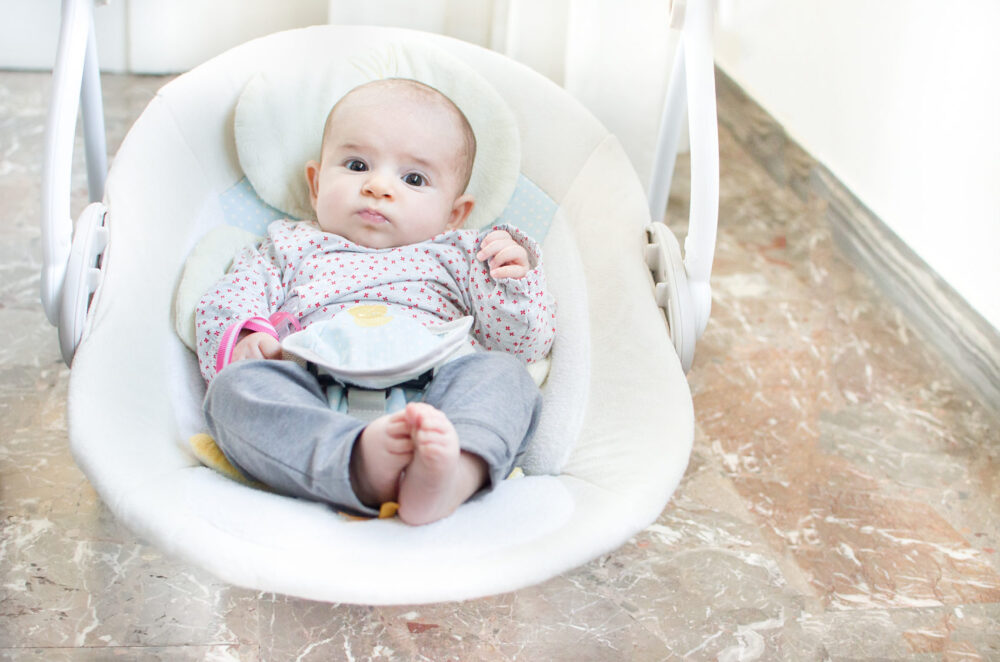
Container Baby Syndrome has become a lot more common in recent years. Babies spend a lot of time in various “containers” including car seats and strollers. These devices are useful to parents because they provide a safe environment for a baby and they allow parents more freedom to move around without worry. These containers can cause Container Baby Syndrome (CBS), which can delay your child’s development.
What is CBS?
Container Baby Syndrome is when babies experience a range of developmental problems including cognitive, social, and movement issues due to excess time spent in “containers”. Some babies may also experience skeletal deformities. Once CBS is diagnosed in your child, your chiropractor can help.
How to Diagnose CBS
Babies start turning their heads toward sound in the first few months of their lives. Their heads are still very soft at this stage of life, and if they spend too much time on their backs or are not supporting their own heads, you may start to notice their head becoming flattened or tilted.
Other common symptoms of CBS are delays in movement and skills, difficulty with hearing or vision, and delayed cognitive abilities. If you notice any of these symptoms in your baby, it’s important to get them checked for CBS. Once diagnosed, you can seek treatment and reverse these issues.
How Chiropractic Care Can Help
If your baby has CBS, a chiropractor can examine their skull shape, muscle development, motor skills, eye movement, and their ability to crawl and roll over.
This exam will help the chiropractor design a specialized treatment plan for your child’s specific needs. Throughout treatment, your child will learn how to move into new positions that will help correct skeletal and muscle issues from CBS. You will learn how to reposition your baby so they can further develop their movements and strength. Increased tummy time and sitting upright is recommended to aid your baby’s development.
You should place your baby on their tummy after they’ve napped, been fed, or had their diaper changed. This increased movement will help them develop their neck and back strength so they can move and look around with more ease. You may be encouraged to use a playpen, move objects to new places, or look into protective headgear.
How to Prevent CBS: What Can You Do at Home?
Containers are an attractive measure to keep your baby safe and entertained. However, to avoid CBS, you should limit the amount of time your baby spends in these containers. Try to only rely on them when you are actually transporting your child and a car seat or stroller as necessary.
Encouraging your baby to play freely, whether in a playpen, on a blanket, or on their backs will help your baby avoid the symptoms of CBS and allow for proper muscle development and movement.
Last but not least, tummy time is very important. Tummy time, recommended for 5-10 minutes every hour or so, lets your baby move all of their muscles and strengthen them as well. Following these guidelines will not only help you prevent CBS, but keep your baby happy and healthy!
Sources:
https://www.moveforwardpt.com/SymptomsConditionsDetail.aspx?cid=53d90264-1846-4b86-891f-0facc63db3e8
https://pediatrics.aappublications.org/content/112/1/199.long
https://blog.ochsner.org/articles/what-is-container-baby-syndrome
